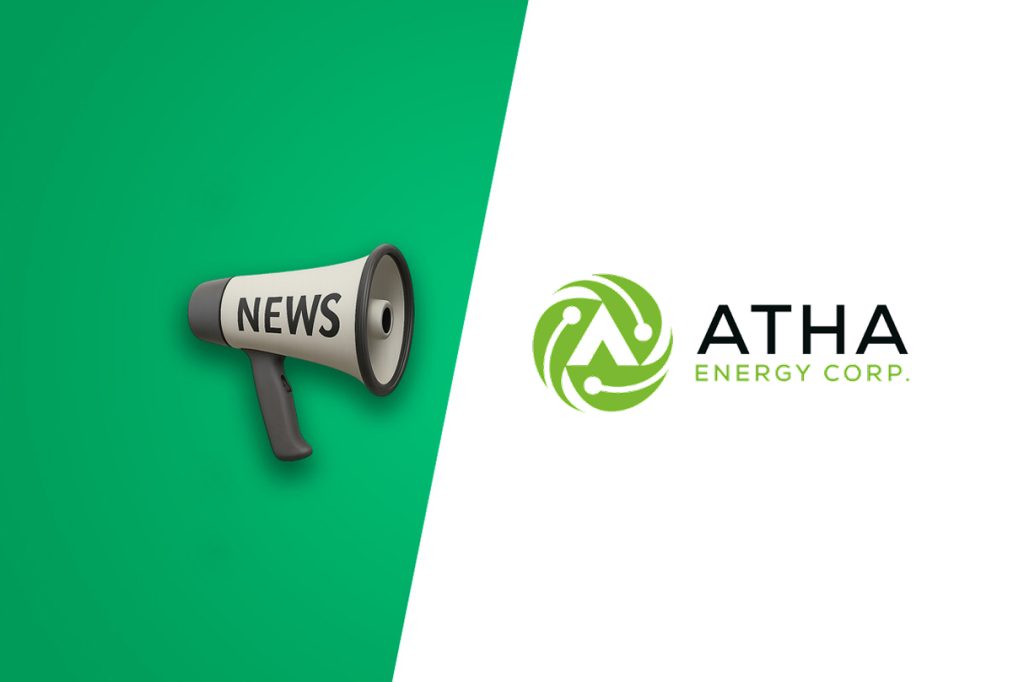ATHA Energy Reports Significant Uranium Discovery at Angilak Project
ATHA Energy Corp. has announced its most significant exploration results to date at its wholly-owned Angilak Uranium Project in Nunavut, Canada. Drillhole RIBN-DD-001 at the newly discovered RIB North target intersected 26.3 meters of composite uranium mineralization across 10 zones, representing a major milestone in the company’s systematic exploration of the Angikuni Basin.
The maiden hole at RIB North, located 1.4 kilo
...
ATHA Energy Reports Significant Uranium Discovery at Angilak Project
ATHA Energy Corp. has announced its most significant exploration results to date at its wholly-owned Angilak Uranium Project in Nunavut, Canada. Drillhole RIBN-DD-001 at the newly discovered RIB North target intersected 26.3 meters of composite uranium mineralization across 10 zones, representing a major milestone in the company’s systematic exploration of the Angikuni Basin.
The maiden hole at RIB North, located 1.4 kilometers from the nearest previous drilling, encountered 13.6 meters of continuous mineralization between 426.25 and 439.85 meters depth. This included a high-grade section of 1.7 meters with peak radioactivity measuring 55,730 counts per second, indicating substantial uranium concentration.
“These results represent a distinct achievement, not only for the 2025 Angilak Exploration Program but for the company as a whole,” said Troy Boisjoli, CEO of ATHA Energy. The discovery builds on the company’s previous work in the region, where it has been exploring what it believes could become Canada’s newest uranium jurisdiction.
The mineralization pattern suggests significant potential for the broader area. ATHA has now traced uranium mineralization across a 4.4-kilometer strike length along the eastern limb of what it calls the Mineralized RIB Corridor (MRC). The parallel western limb extends mineralization over an additional 4.0 kilometers, bringing the total corridor length to approximately 12 kilometers.
Cliff Revering, VP Exploration, emphasized the scale of the discovery: “Our team has now discovered uranium mineralization across a 12-kilometer graphitic structural corridor, and the results from the first RIB North drillhole demonstrate impressive scale and continuity.”
The geological characteristics of the deposit appear particularly promising. The uranium mineralization was first encountered directly above the unconformity at 356.7 meters depth and extends into graphitic basement rock. The widest intersections display basement-hosted, vein-style uranium mineralization associated with strong hematite alteration, graphitic structures, and overprinting silicification.
Boisjoli, drawing on his previous experience in uranium exploration, noted similarities to major established deposits: “From my previous experience working in both exploration and production across the Athabasca Basin, I am keenly aware of the geological characteristics of basement-hosted style uranium deposits. ATHA’s first hole at the RIB North Discovery displays similar grades and thicknesses as other discovery holes from major basement deposits.”
The company’s exploration efforts also yielded results in other parts of the property. Additional drilling at RIB South produced more modest findings, with maiden drillhole RIBS-DD-001 intersecting low-grade mineralization over three zones totaling 2.1 meters. On the western limb, drillhole RIBW-DD-003 intersected continuous uranium mineralization over 1.8 meters, including 0.2 meters of high-grade mineralization with average radioactivity of 2,635 counts per second and a peak of 16,030 counts per second.
ATHA Energy employs rigorous technical standards in its exploration program. Radiometric surveying utilizes a Mount Sopris 40TGU-1000 Triple Gamma Geiger down-hole probe for accurate measurement of radioactivity levels. Core samples undergo analysis at Saskatchewan Research Council Geoanalytical Laboratories in Saskatoon, an ISO/IEC 17025:2005 accredited facility.
The timing of this discovery coincides with increasing focus on uranium as a strategic resource. Boisjoli referenced recent U.S. government announcements regarding strategic uranium reserves, noting: “This comes on the heels of the recent announcement by the U.S. government for the need to increase their strategic reserves beyond the current 14-month stockpile. The U.S.’ current annual demand is 50 million pounds of U3O8.”
The CEO drew comparisons to other significant uranium discoveries, suggesting that “when coupling the results from RIB North with the cumulative discoveries made across the 12-kilometer-long MRC, the evidence is stacking up that the MRC has the potential to host discoveries like those found along the Patterson Lake Corridor,” referencing another notable uranium-rich region.
Looking ahead, ATHA’s technical team maintains that the MRC remains open along its entire 12-kilometer length, with significant unexplored ground between the currently defined discoveries. This provides multiple targets for future drilling campaigns and suggests potential for additional discoveries beyond the current resource base.
The Angilak Project’s location in Nunavut positions it within a stable Canadian mining jurisdiction, though development in this northern region would face typical infrastructure challenges associated with remote mining operations. The company’s systematic approach to exploration, utilizing electromagnetic modeling to guide drill targeting, has proven effective in identifying high-priority areas efficiently.
ATHA Energy is listed on the TSX Venture Exchange under the symbol SASK, with additional listings on the Frankfurt Stock Exchange (X5U) and the OTCQB (SASKF).


